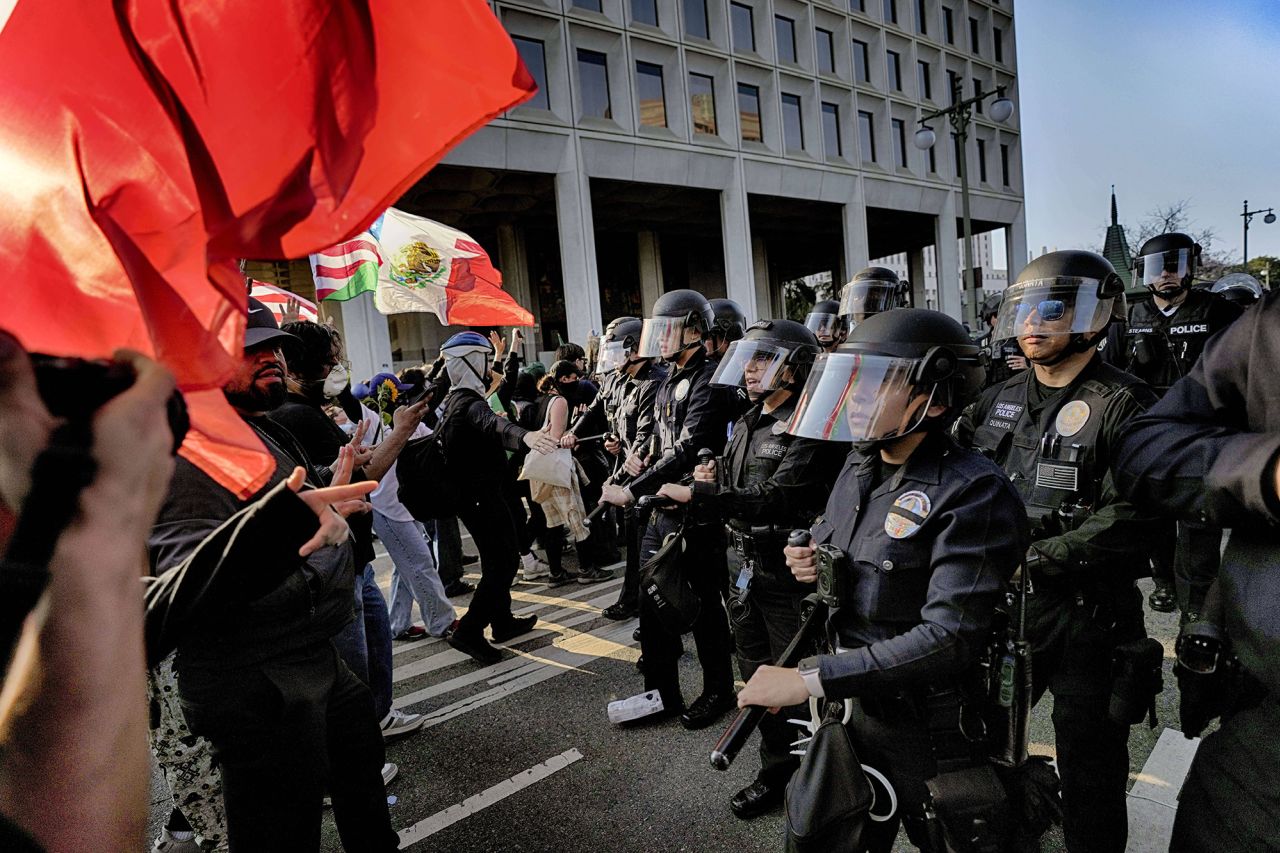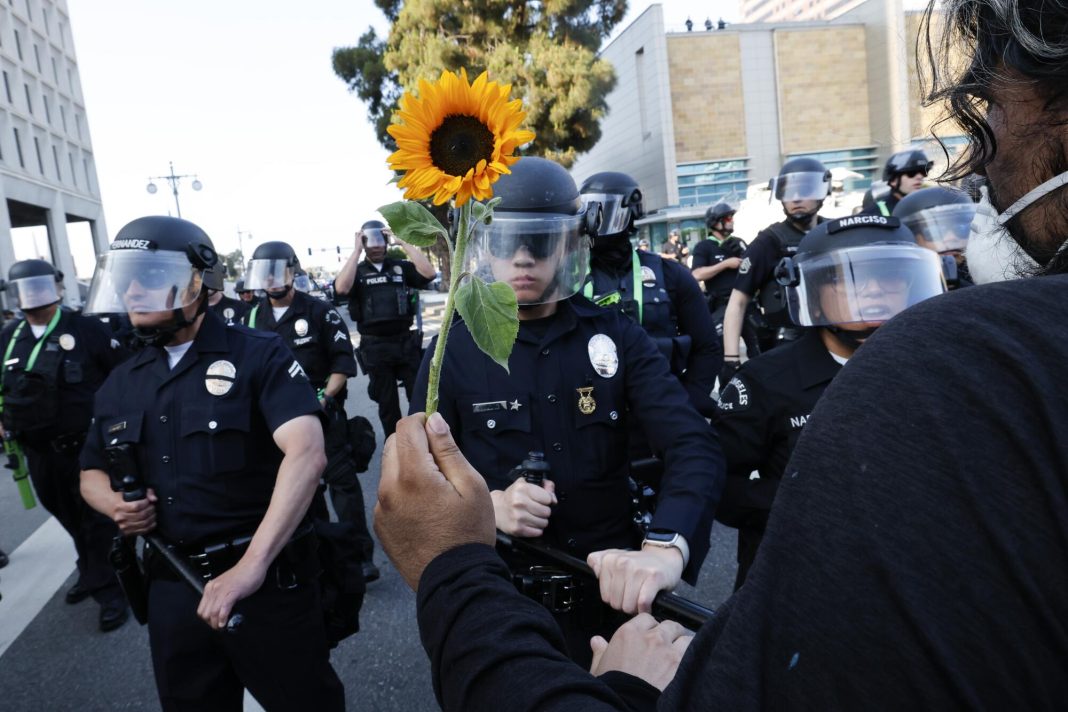Los Angeles Protests Escalate as ICE Raids Spark Public Outcry and Curfew Measures
Los Angeles, CA – June 11, 2025 — The streets of Los Angeles filled with protestors for a second day as thousands demonstrated outside of ICE offices in response to immigration enforcement actions by ICE. What began as peaceful protests turned rapidly into boisterous unrest, prompting city officials to announce emergency measures including a curfew and bringing in military personnel to re-establish order. As of Tuesday, the Los Angeles Protests have entered their fifth consecutive day and there is no sign of letting up.
The Trigger: Aggressive ICE Operations
The spark for this tidal wave of protests was a string of synchronized ICE raids across Los Angeles’ metro area. The raids, which occurred in neighborhoods such as the Fashion District and multiple warehouse areas, led to the arrest of over 40 people, who were in the country without authorization. Community activists and groups that advocate for immigrant rights denounced the raids as “militarized assaults on working families.”
The selective nature of these raids and the heavy-handed manner in which they have been conducted have raised troubling questions about racial profiling and federal overreach. The raids plunged the Trump administration deeper into an already heated issue, and many in the community said it was not only a violation of moral standards, but also a violation of basic
Protests Spread Across the City
Following the news of the raids, protests erupted almost instantly outside key government buildings, including the Metropolitan Detention Center and City Hall. Demonstrators carried banners reading “No More ICE Terror” and “Protect Our Families,” demanding an immediate halt to the raids and the release of detainees.
By late afternoon, groups of protesters had blocked major freeways, including the 101 and 110, bringing traffic to a standstill. Demonstrations also spread to neighborhoods like Boyle Heights, Koreatown, and Westlake, where many immigrant families live.
While many protestors remained peaceful, isolated incidents of vandalism, looting, and clashes with police began to occur as night fell, prompting swift responses from law enforcement.
Curfew and Military Response on Los Angeles Protests
In an emergency press conference held this morning, Los Angeles Mayor Karen Bass announced a citywide curfew from 8:00 PM to 6:00 AM, starting tonight. The curfew currently applies to downtown Los Angeles and surrounding neighborhoods most affected by the unrest.
Mayor Bass stated, “We are doing everything we can to keep the city safe and restore order while protecting the right to peaceful protest. This curfew is a temporary measure to prevent further violence and protect our communities.”
In a controversial move, federal authorities have deployed more than 700 Marines and over 4,000 National Guard troops to assist local law enforcement. The decision has sparked intense political backlash from California officials, including Governor Gavin Newsom, who has filed an emergency motion to block the use of active-duty military forces in civil immigration enforcement.

Legal and Political Fallout
The federal government’s actions have raised questions about the limits of its authority. Governor Newsom criticized the deployment as “an unconstitutional power grab” and accused the White House of escalating tensions rather than resolving them. Several civil rights groups, including the ACLU and the National Immigration Law Center, have joined the legal fight, calling for immediate court intervention.
A federal judge is expected to hear arguments on the matter tomorrow, which could determine whether military forces remain involved in handling the protests and immigration actions in Los Angeles.
Voices from the Ground
Among those arrested during the protests was David Huerta, a well-known labor leader and president of SEIU United Service Workers West. Huerta was reportedly injured during a confrontation with federal agents and is currently recovering in a local hospital. His detention has only fueled further outrage among labor unions and immigrant advocates.
Local residents are divided in their opinions. While many support the protesters’ cause, others are growing concerned about the safety and economic impact of prolonged unrest. Businesses in downtown Los Angeles are boarding up their windows, and several have closed indefinitely.
“I support the movement,” said Rosa Velasquez, a local teacher. “But I worry about what’s going to happen if this continues. My students are scared, and families are being torn apart.”
The Humanitarian Response
In response to the Los Angeles Protests, several community organizations have mobilized to provide aid to affected families and support peaceful protestors. Food banks, churches, and medical clinics have extended their hours, offering emergency services and shelter for those impacted by the raids or the violence.
Clergy from various denominations are holding interfaith vigils and peace marches, urging calm and unity amid the chaos. “We cannot meet force with more force,” said Reverend Michael Lawson. “Our community needs healing, not division.”
What Happens Next?
As night approaches, the mood in Los Angeles remains tense. Authorities are bracing for another evening of demonstrations, and protest organizers say they plan to continue marching until their demands are addressed. With legal battles looming and public anger at a boiling point, the Los Angeles Protests are quickly becoming a national flashpoint for the debate on immigration policy and the use of federal force.
What remains clear is that this moment in Los Angeles will have lasting implications for the city, the state of California, and the broader national conversation on civil rights, immigration, and government accountability.
